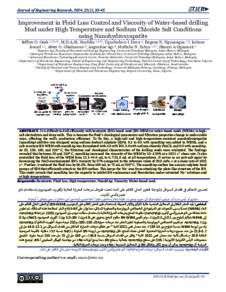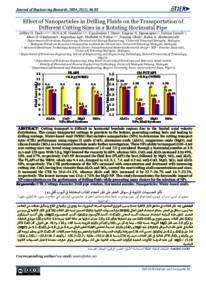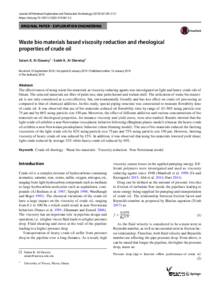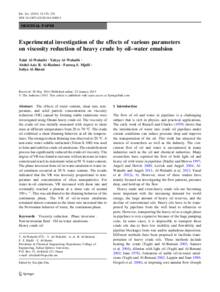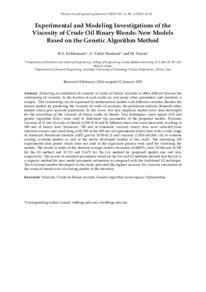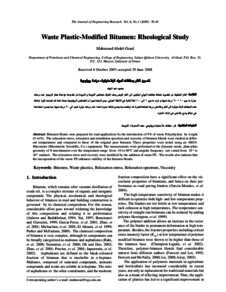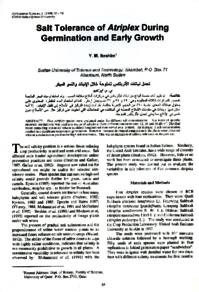Document
Improvement in fluid loss control and viscosity of water-based drilling mud under high temperature and sodium chloride salt conditions using nanohydroxyapatite.
Identifier
DOI:10.53540/tjer.vol.21iss1pp33-45
Source
Journal of Engineering Research, v. 21, no. 1, p. 33-45.
Contributors
Norddin, M.N.A.M., Author
Duru, Ugochukwu I., Author
Ngouangna, Eugene N., Author
Ismail, Issham, Author
Gbadamosi, Afeez O., Author
Agi, Augustine, Author
Yahya, Muftahu N., Author
Oguamah, Ifeanyi A., Author
Other titles
تحسين التحكم في فقدان السوائل ولزوجة الطين القائم على الماء تحت ظروف درجات الحرارة العالية وكلوريد الصوديوم باستخدام نانو هيدروكسي أباتيت.
Country
Oman
City
Muscat
Publisher
College of Engineering, Sultan Qaboos University.
Gregorian
2024-08-14
Language
English
Subject
English abstract
It is difficult to drill efficiently with bentonite (BN)-based mud (BN-WBM) or water-based muds (WBMs) in high
salt electrolytes and deep wells. This is because the fluid's rheological parameters and filtration properties change in undesirable
ways, affecting the well's production efficiency. To fix this, a high-salt and high-temperature-resistant nanohydroxyapatite
(nanoHAp) additive was designed using sodium dodecyl sulphate (SDS). 0.1 to 0.5 wt% nanoHAp was added to WBMs, and a
salt-resistant BN-WBM with nanoHAp was formulated with 4.8 wt% BN, 5.0 wt% sodium chloride (NaCl), and 0.5 wt% nanoHAp.
At 25, 150, 180, and 210° C, the filtration and rheological characteristics of the drilling muds were evaluated. The findings
revealed that between 25 and 210° C, nanoHAp increased the viscosity of the WBM by 15–139% at a 1021 s-1 shear rate. It also
controlled the fluid loss of the WBM from 12.1-44.6 mL to 6.7-21.8 mL at all temperatures. It serves as an anti-salt agent by
decreasing the NaCl-contaminated BN's viscosity by 57% compared to the reference value of 20.8 mPa. s at a shear rate of 1021
s-1. Further, it reduced the fluid loss by 56.8%, from 169 mL to 73 mL at 210° C. The nanoHAp surface has anionic sulphate head
groups of SDS that efficiently attach to the BN surface. This keeps the Na+ ions from attacking the plate-like structure of the BN.
This study reveals that nanoHAp has the capacity to inhibit BN coalescence and flocculation under saturated Na+ solutions and
at high temperatures.
ISSN
Online: 1726-6742
Print: 1726-6009
Arabic abstract
يُعد الحفر الفعّال في المحاليل المالحة عالية التركيز والآبار العميقة باستخدام طين الحفر القائم على البنتونيت (BN-WBM) أو الطين المائي (WBMs) تحديًا بسبب التغيرات غير المرغوبة في الخصائص الريولوجية والتصفية للسائل، مما يؤثر على كفاءة إنتاج البئر. لمعالجة هذه المشكلة، تم تطوير مادة مضافة من نانو هيدروكسي أباتيت (nanoHAp) مقاومة للملح ودرجات الحرارة العالية باستخدام كبريتات دوديسيل الصوديوم (SDS). تم إضافة nanoHAp إلى WBMs بتركيز يتراوح بين 0.1 إلى 0.5 وزن ٪، وتم تكوين BN-WBM مقاوم للملح يحتوي على 4.8 وزن ٪ BN و5.0 وزن ٪ كلوريد الصوديوم (NaCl).
تم تقييم الخصائص الريولوجية والتصفية للطين عند الحفر عند درجات حرارة 150، 180، و210 درجة مئوية. أظهرت النتائج أن nanoHAp حسّن لزوجة WBM بنسبة تتراوح بين 15-139٪ عند جميع درجات الحرارة، كما قلل من فقدان السوائل بنسبة 56.8٪. بالإضافة إلى ذلك، وجد أن nanoHAp يقلل من فقدان السوائل بنسبة 57٪ عند استخدام BN المعدل بـ NaCl مقارنة بـ BN غير المعدل. علاوة على ذلك، أظهر الطين WBM انخفاضًا في فقدان السوائل بنسبة تصل إلى 73 ملم عند درجة حرارة 210 درجة مئوية.
أوضحت الدراسة أن nanoHAp يمنع تكوّن التكتل وتفلّق BN في المحاليل المشبعة بـ Na+ وعند درجات الحرارة العالية.
تم تقييم الخصائص الريولوجية والتصفية للطين عند الحفر عند درجات حرارة 150، 180، و210 درجة مئوية. أظهرت النتائج أن nanoHAp حسّن لزوجة WBM بنسبة تتراوح بين 15-139٪ عند جميع درجات الحرارة، كما قلل من فقدان السوائل بنسبة 56.8٪. بالإضافة إلى ذلك، وجد أن nanoHAp يقلل من فقدان السوائل بنسبة 57٪ عند استخدام BN المعدل بـ NaCl مقارنة بـ BN غير المعدل. علاوة على ذلك، أظهر الطين WBM انخفاضًا في فقدان السوائل بنسبة تصل إلى 73 ملم عند درجة حرارة 210 درجة مئوية.
أوضحت الدراسة أن nanoHAp يمنع تكوّن التكتل وتفلّق BN في المحاليل المشبعة بـ Na+ وعند درجات الحرارة العالية.
Category
Journal articles

